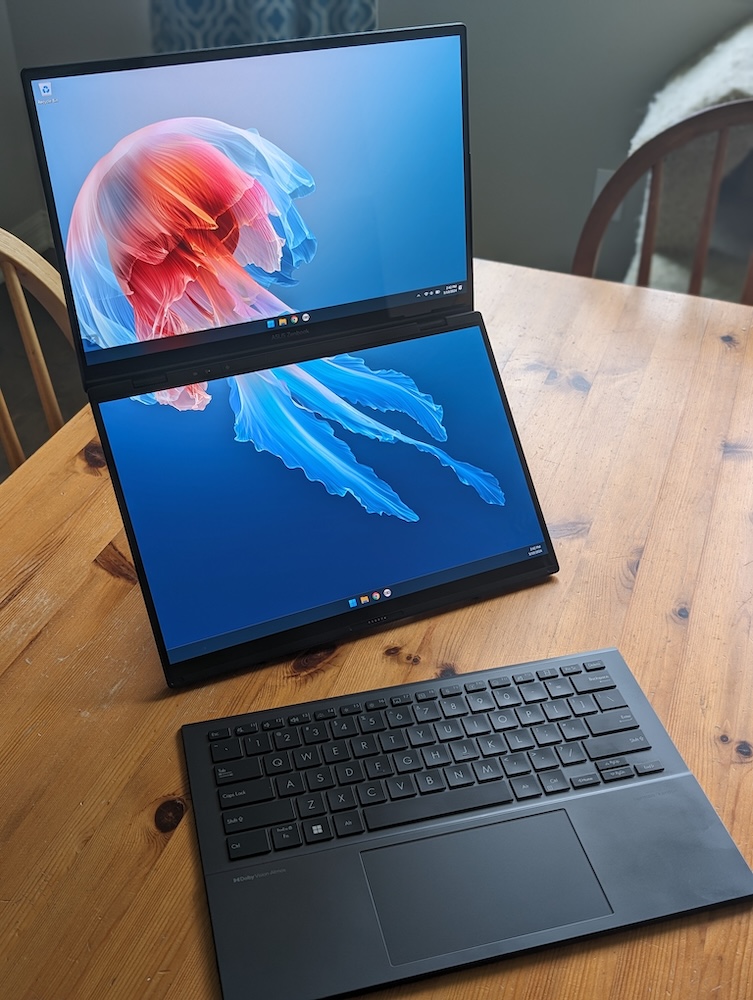Mini-review: Asus Zenbook Duo (2024)
posted by Jeff | Monday, March 11, 2024, 7:46 PM | comments: 0I bought the 16" M2 MacBook Pro about a year ago, and it has been fantastic. As I said, Apple got back to making excellent hardware. I've enjoyed writing code on it, as it really has no compromises. To that end, I was not in the market for another laptop, a second one, but I was looking for a solution to my lighting console problem. The short version is that the console I'm going to acquire lacks its own computer or screens (and therefore does not cost $80k!), so I was looking for a practical solution. My first thought was to get one of those little NUC machines and some big touch screens. Then Dave 2D previewed this new Asus, and it was like it was made specifically for this problem. A laptop with two screens is far more portable and easy to roll with, and I could add another external screen, too. This one is not intended to replace the MacBook, but I inevitably have to compare the two.
This machine will be the brain of the lighting rig, but it's also an opportunity for some light gaming, as my only Windows computer. With 14" screens, it also feels less cumbersome to carry about. It comes in two versions, with the base at $1,500, including a Core Ultra 7, 16 GB of RAM, 1TB of storage and 1920x1200 OLED screens. What's crazy is that for only $200 more, you get twice the RAM, 2880x1800 screens and a faster Ultra 9 CPU. I say crazy because $200 wouldn't even double the RAM in my MBP. What I'm struck by is the quality of these OLED screens, and why Apple still isn't using them. Battery life is around 8 hours for normal browser-based stuff, maybe more, and I imagine it would be about the same for dev work (with one screen, anyway). The keyboard you'd think would be squishy given its ability to separate, but it's considerably better than the one on my previous Surface Laptop and the HP that I had before that.
The two-screen trick is not something that I've used that often, but when I have, it's a seamless process. You pull the keyboard off, prop up the computer on the kickstand, and that's it. I set up the computer with an external ViewSonic screen, and found it ran the lighting software perfectly across the three screens. I've used it a few times with multiple browsers open on the two screens. It's odd to have them over each other instead of side by side, but I think that's just muscle memory.
I can't understand why someone didn't think of this design sooner. The 2-in-1 convertible tablets and all of that are fine, and Surface Pro definitely fills a certain niche, but this thing is just silly practical.
Comments
No comments yet.
